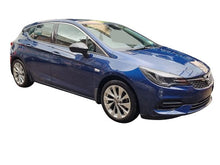
Driving Change: The Fusion of Cars and Green Energy
Frequently Asked Questions
1. What is driving the integration of renewable energy in the automotive industry?
2. What types of electric vehicles (EVs) are available?
3. How do government policies support the adoption of green vehicles?
4. What challenges does the automotive industry face regarding renewable energy?
5. What role do consumers play in the transition to renewable energy in the automotive sector?
As our world grapples with climate change and the urgent need for sustainable solutions, the automotive industry has found itself at a pivotal crossroads. The intersection of automotive and renewable energy is reshaping how we think about transportation, efficiency, and environmental responsibility. In this blog post, we will explore this exciting blend of innovation and sustainability, highlighting the key aspects that are driving this evolution forward.
The Rise of Renewable Energy in the Automotive Sector
The concept of renewable energy is not new, but its application in the automotive industry has gained remarkable momentum in recent years. This shift is largely influenced by advances in technology, growing consumer demand for greener options, and regulations aimed at reducing carbon emissions. Here, we'll delve into the primary types of renewable energy impacting the automotive industry.
Electric Vehicles (EVs)
Electric vehicles, powered by batteries charged through renewable sources like solar, wind, and hydroelectric power, are at the forefront of this revolution. Unlike traditional gasoline-powered vehicles, EVs produce zero tailpipe emissions, significantly reducing urban pollution and reliance on fossil fuels.
- Types of Electric Vehicles: There are various categories, including battery electric vehicles (BEVs), plug-in hybrid electric vehicles (PHEVs), and fuel-cell electric vehicles (FCEVs). Each offers unique benefits tailored to diverse consumer needs.
- Longer Range and Faster Charging: Ongoing advancements in battery technology are addressing range anxiety, with many EVs now capable of traveling over 300 miles on a single charge, coupled with faster charging solutions.
Solar-Powered Vehicles
Solar energy is another renewable source making waves in the automotive sector. Vehicles equipped with integrated solar panels can harness sunlight to charge their batteries, further boosting their efficiency and sustainability. While still in the early adoption phase, prototypes and limited production models have showcased the feasibility of solar assistance in EVs.
Policy and Regulations Driving Change
Government initiatives play a crucial role in fostering the transition to renewable energy in automotive applications. Many countries have set ambitious targets for reducing carbon emissions, and these policies often include incentives for both manufacturers and consumers.
Incentives for Consumers
Financial incentives such as tax credits, rebates, and reduced registration fees for electric and hybrid vehicles encourage consumers to make the switch. By lowering the initial cost barrier, governments aim to accelerate the adoption of greener vehicles.
Regulatory Frameworks for Manufacturers
Manufacturers are now subject to stricter emissions standards, fostering innovation in green technology. Automakers are investing heavily in research and development to meet these standards, resulting in more efficient production processes and the incorporation of renewable energy into supply chains.
The Role of Sustainability in Automotive Design
As the automotive industry evolves, so too does the approach to vehicle design. Sustainability now permeates all aspects of manufacturing, from the materials used to create vehicles to the energy sources employed in their assembly.
Eco-Friendly Materials
Car manufacturers are increasingly utilizing sustainable materials to reduce their ecological footprint. Materials such as recycled plastics, natural fibers, and bio-based composites are finding their place in vehicle design.
- Recycling Initiatives: Age-old parts and materials are being recycled into new components, which not only cuts waste but also reduces the carbon footprint of new vehicles.
- Carbon Footprint Tracking: Many manufacturers are implementing systems to trace their carbon footprint throughout the production process, striving for increased transparency and accountability.
Design for Disassembly
Another significant trend is designing vehicles with the end-of-life phase in mind. By creating cars that can be easily disassembled, manufacturers can enhance the recyclability of their products, further contributing to a circular economy.
Consumer Attitudes Towards Green Vehicles
Consumer attitudes are evolving alongside advancements in technology and policy. As awareness grows about climate change and environmental impacts, more people are considering green vehicles, resulting in a market shift.
Education and Awareness
Educational campaigns play a significant role in changing consumer perceptions. By providing information on the benefits of renewable energy vehicles—such as lower operating costs, reduced maintenance, and a smaller carbon footprint—potential buyers become more inclined to consider these options.
Community Initiatives
Local communities are also investing in infrastructure that supports the adoption of electric and hybrid vehicles. Charging stations, car-sharing programs, and public transport options powered by green energy are becoming more commonplace, creating an ecosystem that encourages sustainable transportation choices.
Challenges on the Road Ahead
Despite the significant progress made, challenges remain in the adoption of renewable energy in the automotive sector. Addressing these obstacles is crucial for the future of sustainable transportation.
Charging Infrastructure
The lack of sufficient charging infrastructure continues to be a significant barrier for prospective EV owners. A concerted effort is required to build out an expansive, accessible network of charging stations that can alleviate range anxiety and support long-distance travel.
Battery Production and Disposal
While EVs offer substantial environmental benefits, the production of batteries has raised concerns regarding resource extraction and sustainability. Moreover, end-of-life battery disposal presents environmental challenges, necessitating advancements in battery recycling technologies to minimize impacts.
Looking Ahead: The Future of Automotive and Renewable Energy
The trajectory of the automotive industry is one of transformation, with renewable energy at the forefront of this change. Innovations and collaborations between governments, manufacturers, and consumers will continue to drive the integration of green technologies into mobility solutions.
The Role of Innovation
Innovation will be the cornerstone of overcoming challenges in this intersection of automotive and renewable energy. Advancements in battery technology, alternative fuels, and renewable energy powertrains will help pave the way for a more sustainable future.
Mobility as a Service (MaaS)
The rise of Mobility as a Service (MaaS) platforms presents exciting opportunities for integrating renewable energy into transportation systems. By enabling users to access a variety of transport options, including electric rideshares and public transportation, MaaS can reduce car ownership and promote greener urban mobility.
Your Role in the Green Revolution
The shift towards renewable energy in the automotive sector isn't just a responsibility for manufacturers and policymakers; it involves all of us as consumers. By making informed decisions and voicing preferences for sustainable options, we can collectively steer the industry toward a greener path. From advocating for infrastructure improvements to opting for electric vehicles, every action contributes to a larger movement towards environmental responsibility.
Join in the transformation by exploring the latest developments in renewable energy and automotive technology. The road to sustainability is a journey we can all take part in; individual choices fuel the momentum toward a cleaner, greener future for generations to come.





















